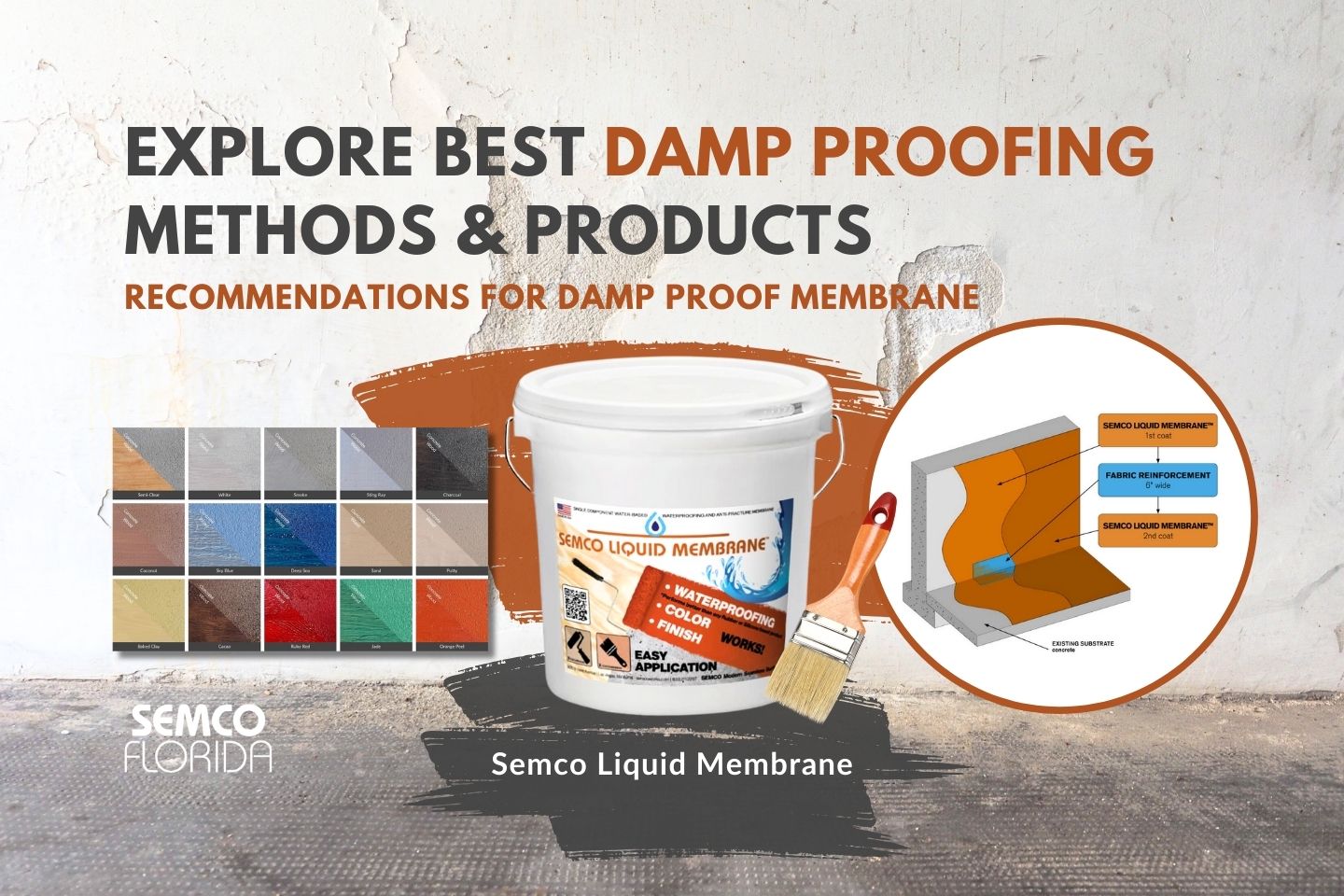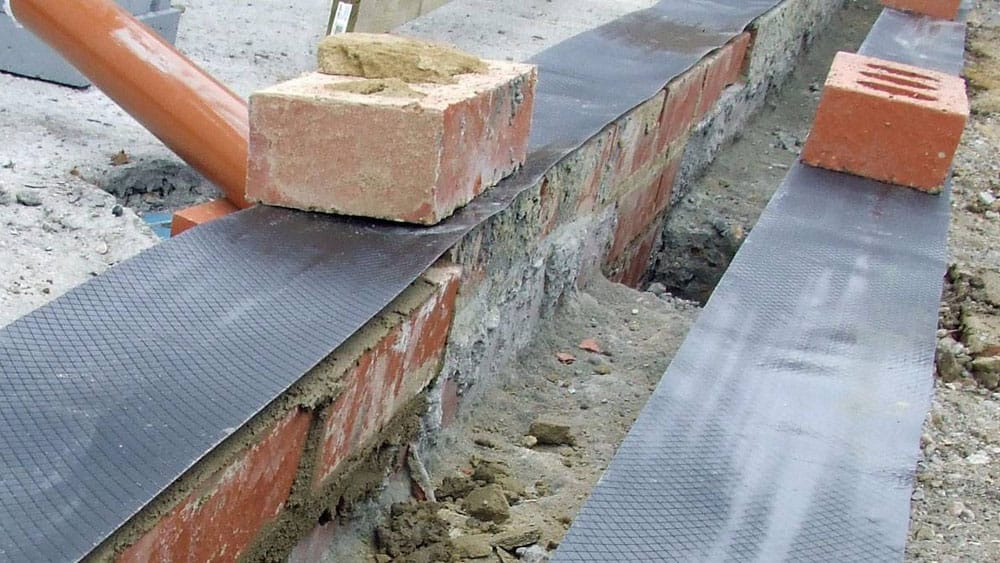Solving damp problems through mould removal newcastle: What really works?
Solving damp problems through mould removal newcastle: What really works?
Blog Article
Discovering the Various Methods and Solutions for Effective Damp Proofing
Wetness in structures positions substantial challenges to both structural stability and indoor air high quality. Different methods and options have actually emerged to combat this pervasive issue. From conventional damp-proof membranes to ingenious chemical therapies, each technique provides one-of-a-kind benefits. Recognizing these alternatives is important for effective wetness control. Selecting the best service depends on specific structure problems and demands, motivating further expedition into the most reliable wet proofing strategies available.
Comprehending the Reasons For Wetness
Moisture can occur from different resources, comprehending these causes is essential for reliable remediation. Typically, dampness stems from three main sources: rising damp, passing through wet, and condensation. Rising wet takes place when groundwater takes a trip up-wards with permeable products, such as block or rock, usually as a result of an absence of an effective obstacle (damp proofing newcastle). Passing through moist is typically triggered by exterior variables, including roof covering leakages, damaged seamless gutters, or damaged wall surfaces, enabling water to penetrate a home. Condensation, on the various other hand, arises from excess wetness airborne, commonly exacerbated by bad air flow and temperature differences, bring about water droplets creating on surfaces. Recognizing these underlying concerns is necessary, as each sort of moisture needs a customized method for removal. Correct analysis aids in figuring out one of the most effective options, eventually securing the architectural honesty of a building and enhancing indoor air high quality
Standard Damp-Proof Membrane Layers

Chemical Damp-Proofing Solutions
Chemical damp-proofing options use a cutting-edge strategy to avoid moisture invasion in structures. These approaches generally include the application of liquid chemicals that permeate masonry and develop an obstacle versus increasing moist. Generally used chemicals include silanes, siloxanes, and other water-repellent representatives that respond with surface area products to develop a hydrophobic layer.The application process generally calls for boring openings right into the wall surfaces, injecting the chemical option, and enabling it to cure. This method is particularly beneficial for older structures where typical damp-proof membranes might be not practical. In addition, chemical damp-proofing can be much less disruptive and more cost-efficient than comprehensive renovation projects.While effective, these remedies depend upon proper application and ecological conditions for peak efficiency. Normal maintenance and monitoring are important to assure the long life of the damp-proofing therapy. In general, chemical damp-proofing represents a versatile option for protecting buildings against moisture-related damage
Tooth Cavity Wall Surface Building And Construction Techniques
Cavity wall building and construction strategies provide countless benefits, especially in dampness control and energy effectiveness. By including an air gap between 2 layers of masonry, these walls effectively reduce water access while enhancing insulation. This combination not only secures frameworks from moisture yet also contributes to minimized power usage.
Advantages of Dental Caries Walls
When taking into consideration effective wet proofing methods, the advantages of tooth cavity wall surfaces attract attention plainly. Cavity walls include two separate layers, creating an air space that successfully lowers moisture penetration. This style decreases the threat of wetness, as the external wall serves as a barrier against rain and water ingress. Additionally, tooth cavity wall surfaces improve thermal insulation, which adds to power performance by lowering warmth loss. They also offer sound insulation, helping to create a quieter interior environment. The air space enables for ventilation, which assists in dampness control and decreases the likelihood of mold development. These advantages not only boost the general convenience of a building but also add to its long life and architectural integrity.
Moisture Control Techniques
Effective wetness control approaches are crucial in tooth cavity wall construction to ensure lasting security versus dampness. One key method includes the incorporation of weep holes, which facilitate water drain from the dental caries, avoiding accumulation. Furthermore, making use of breathable membrane layers can aid handle dampness levels while enabling trapped vapor to get away. Correct placement of insulation is likewise essential, as it must not block drainage paths. Guaranteeing that the outer leaves of the tooth cavity wall surface are built with waterproof materials improves general durability. Regular maintenance checks are vital to determine any blockages or damage early, protecting the structure's stability. Inevitably, a mix of these strategies creates a robust protection versus dampness breach in dental caries wall surfaces.
Insulation and Power Performance
Insulation plays a vital duty in boosting power performance within dental caries wall building and construction. By including insulating materials, these wall surfaces develop a thermal obstacle that decreases warmth loss and minimizes power usage. Efficient insulation not only helps maintain a steady interior temperature but also mitigates the risk of wetness, as it protects against condensation within the wall surface tooth cavity. Different strategies, such as the usage of stiff foam boards or mineral wool, can be used to attain excellent insulation efficiency. Furthermore, proper installation is necessary to guarantee that spaces and voids are minimized, which can or else compromise power effectiveness. Ultimately, a well-insulated tooth cavity wall adds greatly to overall sustainability and decreases cooling and heating expenses for property owners.
External Damp Proofing Approaches
Outside damp proofing approaches are crucial for securing structures from dampness infiltration. Two reliable methods consist of the application of water-proof membranes and the installment of French drains. These services help mitigate water build-up and protect the honesty of structures.
Waterproof Membrane Layer Application
While numerous approaches exist for preventing wetness ingress, the application of waterproof membranes stays read more a very efficient external wet proofing strategy. These membrane layers are usually made from materials such as polyethylene, rubber, or changed asphalt, providing a durable barrier versus water penetration. The setup procedure involves applying the membrane to the external surfaces of walls or foundations, making certain complete protection to stop leaks. Proper attachment and securing at joints are vital to optimizing performance. Water-proof membranes can be applied in different kinds, consisting of liquid finishings and sheet membrane layers, permitting adaptability based upon the specific requirements of the structure. This technique not only secures structures from moisture however likewise improves their durability and architectural stability.
French Drainpipe Installment
One reliable method for handling groundwater and preventing dampness buildup around a building's foundation is the installment of a French drain. This drain system includes a trench loaded with crushed rock and a perforated pipe that reroutes surface area water away from the structure. Proper installation calls for mindful preparation, making certain that the drainpipe slopes away from the structure to help with suitable water circulation. Furthermore, the place of the drain is vital; it needs to be placed in locations vulnerable to pooling or excess dampness. Routine maintenance, consisting of cleaning debris from the crushed rock and making certain the pipeline remains unobstructed, is important for long-term effectiveness. Inevitably, a well-installed French drain can greatly lower the danger of water-related issues in basements and structures.
Inside Waterproofing Techniques
Inside waterproofing approaches are crucial for securing a structure's interior from dampness infiltration and potential water damages. These methods usually include the application of specialized products and methods developed to create a wetness barrier within the structure. One common approach is the use of water resistant finishings or sealants on wall surfaces and floorings, which stop dampness from penetrating surfaces.Additionally, setting up indoor water drainage systems, such as sump pumps, can effectively handle water accumulation in cellars and creep areas. One more approach includes making use of vapor barriers, which are installed to inhibit wetness activity from the ground into living spaces.Moreover, addressing any splits or spaces in wall surfaces or foundations with suitable sealers ensures a comprehensive defense against water invasion. By implementing these interior waterproofing techniques, property owners can significantly minimize the risk of mold growth, structural damage, and other moisture-related problems. Appropriate implementation of these methods is crucial for long-term protection and structure stability.
Routine Maintenance and Examination Practices
Normal maintenance and evaluation methods are important for ensuring the long-lasting performance of damp proofing services in any building. Routine checks enable building proprietors to recognize very early indications of wetness invasion, such as peeling paint, mold development, and stuffy smells. These signs can indicate underlying problems that need instant attention.Inspections ought to be conducted a minimum of each year, concentrating on at risk areas like basements, creep areas, and exterior walls. Throughout these evaluations, homeowner need to take a look at sealers, water drainage systems, and ventilation to verify they work correctly.Additionally, keeping gutters and downspouts is vital, as blocked systems can lead to water buildup near the foundation. Executing a normal upkeep schedule, along with prompt repair work, can considerably extend the life-span of damp proofing actions and safeguard the architectural integrity of the structure. Proactive actions ultimately add to the overall health and wellness and security of the living setting.
Often Asked Inquiries
Exactly How Lengthy Does Damp Proofing Usually Last?
The period of moist proofing effectiveness differs, generally lasting between 20 to half a century. Aspects such as application high quality, environmental conditions, and maintenance techniques considerably affect the durability of the moist proofing treatment.

Can I Damp Evidence My Home Myself?
The private considered the expediency of DIY damp proofing. With proper research and the best materials, it is possible. Nevertheless, they also acknowledged the significance of specialist assistance to guarantee durable efficiency and stop future concerns.
What Are the Indicators of Inefficient Damp Proofing?
Indicators of inefficient wet proofing include consistent mildewy odors, visible mold development, peeling paint, moist spots on wall surfaces, and timber decay - damp specialist newcastle. House owners need to address these problems without delay to avoid additional damages and wellness concerns
Does Damp Proofing Affect Indoor Air Quality?

Exactly How Much Does Specialist Damp Proofing Cost?
Expert wet proofing costs differ substantially, normally varying from $1,000 to $5,000 depending on the residential property's dimension, the degree of the wet problem, and selected methods. Each scenario needs a customized evaluation for accurate rates. Commonly, dampness stems from 3 key resources: rising damp, permeating moist, and condensation. When taking into consideration effective damp proofing techniques, the benefits of dental caries wall surfaces stand out plainly. Outside wet proofing methods are necessary for shielding frameworks from dampness infiltration. While various methods exist for avoiding wetness access, the application of water-proof membrane layers continues to be a highly effective outside moist proofing method. Signs of ineffective damp proofing consist of consistent stuffy smells, visible mold growth, peeling off paint, wet patches on wall surfaces, and timber decay.
Report this page